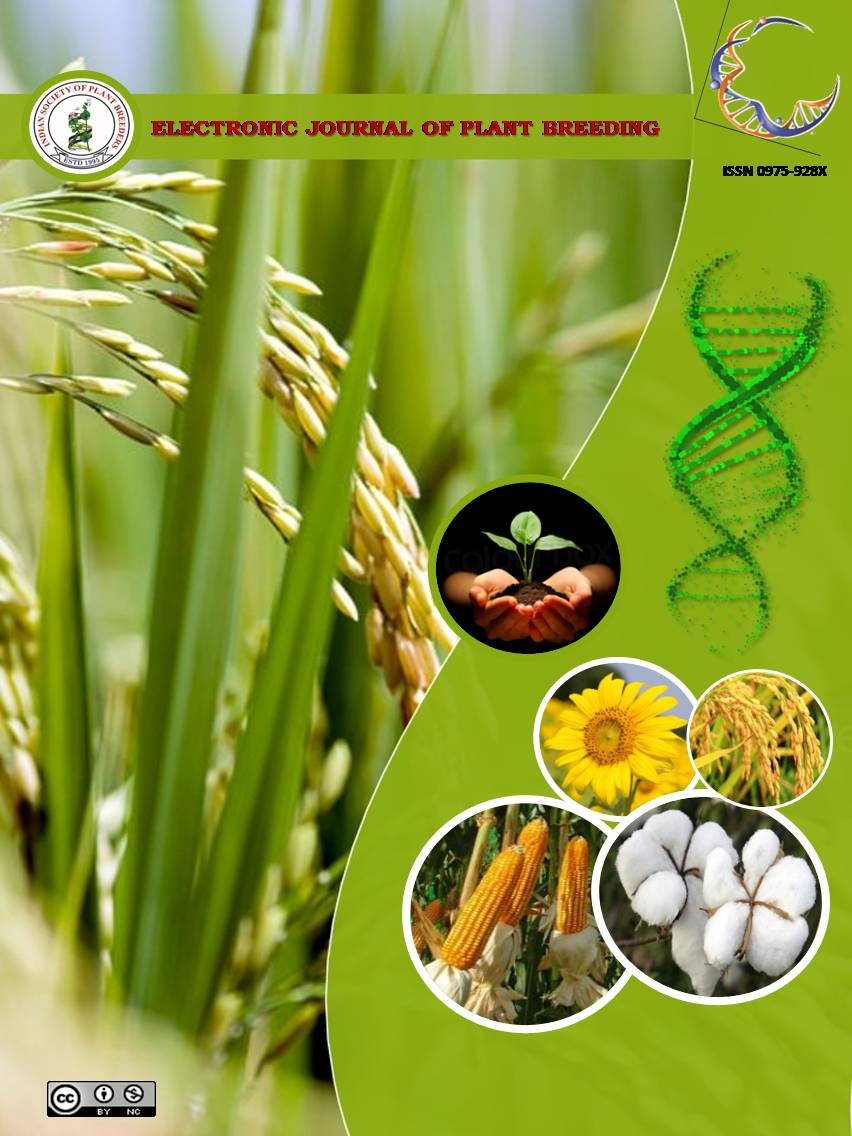Morphological and grain quality analysis of basmati rice (Oryza sativa L.) under different systems in north-west plains of Himalaya
Abstract
As water scarcity becomes a more pervasive agricultural constraint, any intervention to limit the water requirements in rice cultivation will enhance the overall sustainability and food security in the face of climate change. System of rice intensification (SRI) is a methodology for increasing the rice productivity using reduced inputs, including seeds and chemical fertilizers, and water requirements and has a potential for climate change mitigation through avoiding flooded conditions on rice fields which brings down methane emissions from rice cultivation. It also enhances the resilience of rice cultivation systems against climate risks as it generates healthier and more robust rice plants with deep and more vigorous root systems. Field experiment was conducted during wet season (June-November) 2011 to assess the rice productivity and water usages of a Basmati rice varieties viz., Basmati 370, Ranbir Basmati, Basmati 564, Sanwaal Basmati, Toraori Basmati and Nagina 22 (N22) under SRI and conventional transplanted (CTP) methods of rice cultivation. Among the different rice production methods, system of rice cultivation (SRI) produced significantly higher grain yield (3850 to 5200 kg ha-1) than the transplanted rice (3650 to 5000 kg ha-1). Total water productivity of the SRI was 19.3 % higher with saving of 25% irrigation water as compared to conventional method. Among genotypes N 22 had the highest per day productivity (45.02), followed by Basmati 564 (41.60) and Sanwaal Basmati (37.54). This also helps to reduce the water requirement and facilitates to avoid water stress specially rice grown in tail end areas.

It is certified that:
- The corresponding author is fully responsible for any disputes arising due to the publication of his/her manuscript.
- The article has been seen by all the authors who are satisfied with its form and content.
- The sequence of names of authors in the by-line is as per their relative contribution to this experiment, giving due credit to all scientists who made notable contribution to it.
- All the authors fully understand that inclusion of any other co-authors or exclusion of any co-authors is not possible once the article has been submitted to the journal.
- The corresponding author takes full responsibility for this article.
- The address of the organization where the research was conducted is given.
- The article is exclusive for this journal, and the results reported here have not been sent (and will not be sent during its consideration by this journal) for publication in any other journal.
- Authors agree to abide by the objective comments of referees and do agree to modify the article into a short note as per the recommendation, for publication in the Electronic Journal of Plant Breeding.
- If published in Electronic Journal of Plant Breeding, the copyright of this article would vest with the Indian Society of Plant Breeders, who will have the right to enter into any agreement with any organization in India or abroad engaged in reprography, photocopying, storage and dissemination of information contained in it, and neither we nor our legal heirs will have any claims on royalty.


